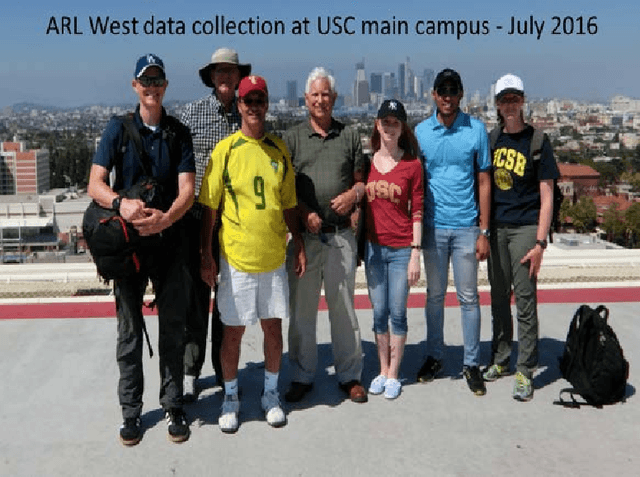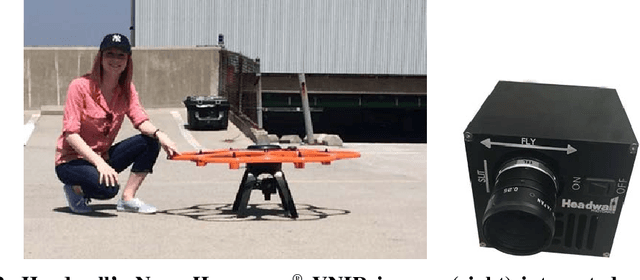Dalton Rosario
3D Terrain Segmentation in the SWIR Spectrum
Oct 27, 2018



Abstract:We focus on the automatic 3D terrain segmentation problem using hyperspectral shortwave IR (HS-SWIR) imagery and 3D Digital Elevation Models (DEM). The datasets were independently collected, and metadata for the HS-SWIR dataset are unavailable. We explore an overall slope of the SWIR spectrum that correlates with the presence of moisture in soil to propose a band ratio test to be used as a proxy for soil moisture content to distinguish two broad classes of objects: live vegetation from impermeable manmade surface. We show that image based localization techniques combined with the Optimal Randomized RANdom Sample Consensus (RANSAC) algorithm achieve precise spatial matches between HS-SWIR data of a portion of downtown Los Angeles (LA (USA)) and the Visible image of a geo-registered 3D DEM, covering a wider-area of LA. Our spectral-elevation rule based approach yields an overall accuracy of 97.7%, segmenting the object classes into buildings, houses, trees, grass, and roads/parking lots.
Small Drone Field Experiment: Data Collection & Processing
Nov 29, 2017



Abstract:Following an initiative formalized in April 2016 formally known as ARL West between the U.S. Army Research Laboratory (ARL) and University of Southern California's Institute for Creative Technologies (USC ICT), a field experiment was coordinated and executed in the summer of 2016 by ARL, USC ICT, and Headwall Photonics. The purpose was to image part of the USC main campus in Los Angeles, USA, using two portable COTS (commercial off the shelf) aerial drone solutions for data acquisition, for photogrammetry (3D reconstruction from images), and fusion of hyperspectral data with the recovered set of 3D point clouds representing the target area. The research aims for determining the viability of having a machine capable of segmenting the target area into key material classes (e.g., manmade structures, live vegetation, water) for use in multiple purposes, to include providing the user with a more accurate scene understanding and enabling the unsupervised automatic sampling of meaningful material classes from the target area for adaptive semi-supervised machine learning. In the latter, a target set library may be used for automatic machine training with data of local material classes, as an example, to increase the prediction chances of machines recognizing targets. The field experiment and associated data post processing approach to correct for reflectance, geo-rectify, recover the area's dense point clouds from images, register spectral with elevation properties of scene surfaces from the independently collected datasets, and generate the desired scene segmented maps are discussed. Lessons learned from the experience are also highlighted throughout the paper.
 Add to Chrome
Add to Chrome Add to Firefox
Add to Firefox Add to Edge
Add to Edge